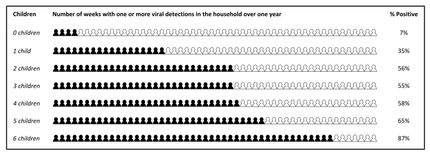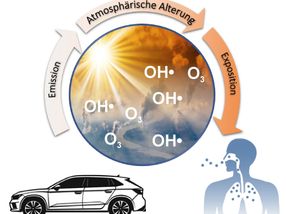Cornell researcher uncovers details of how cancer spreads
Cornell University researchers have now furthered understanding of how the metabolic pathways that allow cancer to metastasize work. Their insights might aid future research on drug therapies that disrupt the sequence of events that lead to metastasis.
A study published in the journal Developmental Cell (Vol. 9, August 2005) reveals how connective tissue holding a cancer cell in place might degrade, unmooring the diseased cell and allowing it to spread to other parts of the body.
"We have identified a pathway that is specific for cancer," said Jun-Lin Guan, a professor in the Department of Molecular Medicine in the College of Veterinary Medicine at Cornell and an author of the paper. "So from here, if someone identifies a drug that targets this pathway, it is possible the drug will not affect normal cell function but will affect cancer cell activity." That, in turn, would alleviate drug side effects.
Guan and his colleagues used a cultured cell line to study cancer, which are mouse cells grown in the lab for research purposes. The researchers used these cells to create a model system for cancer cells, which means its basic pathway exists in real-world systems, while the actual proteins that act on the system may vary.
In the model system, the researchers discovered critical differences between cancer cells and normal cells regarding a mechanism called endocytosis -- which cells employ to let materials enter through the cell membrane.
The researchers used a protein called v-Src derived from an oncogenic virus, which has the ability to transform a normal cell into one with many features resembling those found in cancer cells. While this virus has not been found in humans, it does lead to tumor growth in chickens and created cancerous cells in the cultured system. In the study, the researchers found that v-Src attaches to an enzyme, called focal adhesion kinase, inside the cell. This association jump-starts a series of cascading interactions between proteins in the cell that ultimately block some cell-surface proteins from entering through the cell's membrane.
One of the proteins not allowed entry is called MT1-MMP. As this material accumulates on the cell surface, it degrades the connective tissue that holds the cancerous cell in place. The build-up of MT1-MMP also activates an enzyme called MMP2, which further degrades the connective tissue. In this way, the cancer cell loses its moorings and can float off to spread around the body. While no one has found v-Src in human cancer patients, a number of other cancers have been linked to viruses, including the herpes virus and its association with cervical cancer.
Most read news
Topics
Organizations
Other news from the department science

Get the life science industry in your inbox
By submitting this form you agree that LUMITOS AG will send you the newsletter(s) selected above by email. Your data will not be passed on to third parties. Your data will be stored and processed in accordance with our data protection regulations. LUMITOS may contact you by email for the purpose of advertising or market and opinion surveys. You can revoke your consent at any time without giving reasons to LUMITOS AG, Ernst-Augustin-Str. 2, 12489 Berlin, Germany or by e-mail at revoke@lumitos.com with effect for the future. In addition, each email contains a link to unsubscribe from the corresponding newsletter.
























































